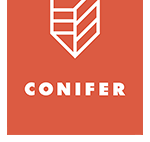
Can Creative Ideation Work From Home? Idea Generation 101

Ideation is a critical part of our toolkit as design researchers. When done right, this step in an Innovation Pipeline project can feel just as magical as when a cartoon light bulb appears above someone’s head. It's a critical step in the creative process where stakeholders come together to translate actionable insights and user needs into concepts for the next business move, whether that is a new product, service, brand, partnership, campaign, business model, or experience.
The ultimate goal of ideation is to generate a large pool of top-of-mind ideas — there are no bad ideas...yet! Ideation is done best with thoughtful structure, a judgment-free zone, and teammates from multidisciplinary backgrounds coming together to respond to user needs and problem or opportunity statements. Later, teams can compile, refine and evaluate this pool of ideas down to the most practical and strategically viable concepts. When facilitated properly, idea generation yields synergy across multiple perspectives, promotes collaboration and harnesses the power of the “hive mind” for problem-solving, and pressure-testing assumptions. In modern business workflows, it has become a well-practiced art within Design Research & Innovation projects — but adapting ideation to digital formats just isn't quite the same.
“In the pre-Covid world, we would bring anywhere from 20 to 40 people together in a room, and use all sorts of creative prompts and props to help stakeholders focus their minds on generating ideas, a role that may be outside their norm,” according to Evan Hanover, Director at Conifer Research.
While it’s easy to think you can gather and brainstorm on demand, even over Zoom, the most successful ideation sessions, in many ways, resemble a performance — they are carefully choreographed events that manage the audience's energy and facilitate a journey. And just like a good improv performance, some things will never be the same once you change their format.
In a perfect world, an ideation session looks something like this:
![]()
Duration: 1.5 days, in a large creative space with breakout spaces. There is a point of diminishing returns when it comes to idea generation so don't wear your team out with more than a few days.
![]() The Cast: An ensemble of 20+ team members from cross-functional parts of the business and 3 or more dedicated facilitators.
The Cast: An ensemble of 20+ team members from cross-functional parts of the business and 3 or more dedicated facilitators.
![]() Warm-up: Set the scene, build energy and create trust on day 1 with casual social interactions, vision-setting activities and team icebreakers.
Warm-up: Set the scene, build energy and create trust on day 1 with casual social interactions, vision-setting activities and team icebreakers.
![]() Mood and Staging: Using key insights, visuals and provocations, conduct several rounds of creative ideation, timed with intermittent share-outs, followed by sorting and prioritization by the end of the first day.
Mood and Staging: Using key insights, visuals and provocations, conduct several rounds of creative ideation, timed with intermittent share-outs, followed by sorting and prioritization by the end of the first day.
![]() Review the Highlights (Day 2): Embrace the power of “sleeping on it,” and come back the next morning with fresh perspectives. Review what was accomplished, then reflect, cluster, prioritize and develop an action plan for what moves forward.
Review the Highlights (Day 2): Embrace the power of “sleeping on it,” and come back the next morning with fresh perspectives. Review what was accomplished, then reflect, cluster, prioritize and develop an action plan for what moves forward.
Throughout the process, the high energy and chaos that is naturally felt on the first day become meaningful, with the entire process inspiring a rapid, collaborative, creative improv performance that yields something new and actionable.
 The Social Dance of Facilitation: It’s easy to think of ideation sessions as fun, energetic sessions that people can’t wait to attend. This guided adventure in noodling around new ideas provides a chance to uncover the next big thing for the company, to form the vision for where the business goes next, and to flex the imagination. However, a good facilitator knows that it is just as critical to design for those who may find the creative, fast, on-the-spot, and ambiguous process of brainstorming filled with discomfort. A well-run ideation session needs to create safety for everyone. When hosting ideation in person, there are many ways to do this:
The Social Dance of Facilitation: It’s easy to think of ideation sessions as fun, energetic sessions that people can’t wait to attend. This guided adventure in noodling around new ideas provides a chance to uncover the next big thing for the company, to form the vision for where the business goes next, and to flex the imagination. However, a good facilitator knows that it is just as critical to design for those who may find the creative, fast, on-the-spot, and ambiguous process of brainstorming filled with discomfort. A well-run ideation session needs to create safety for everyone. When hosting ideation in person, there are many ways to do this:
A Personal Welcome - Ideation sessions often bring new or extended teams into the fold for fresh thinking. For these fresh faces, it’s important that the facilitators are not seen as a threat or competition, so we start the work of creating a lively and safe environment from the moment we arrive using our research superpowers of rapport building. Making personal connections with new arrivals and asking them questions about their role and what they are looking forward to. It's important to make each and every stakeholder feel valued and ready to contribute.
Moderator Mixing - Assigned spots are out the window for facilitators — ideation days are active “up-on-your-feet” workdays where we are busy working the room, tracking multiple conversations, listening for cues that someone is stuck, needs to pivot, fresh provocation, or a little encouragement. Without this constant magic of “working the room”, energy can quickly tank and focus can come undone.
Dynamic Conversations - Simultaneous conversations peppered with body language and spontaneous laughter are all a part of the thrill of in-person communications that act as creative fuel. Moderators play an important role in an ideation session’s success by encouraging intentional diversions, moments of levity, humor, lightheartedness, and alternative points of view that keep people in the “yes we can” mindset instead of a negative or restrictive space. We encourage conversation flow by asking questions like “What about…?” and “What if…?”
Letting things Simmer - Like fine wine, great thinking takes time to develop its best flavor. In order to get somewhere, successful ideation sessions really do require teams to give up 4-6 hours of a given day to dedicate their minds to creative problem-solving without interruptions and distractions. By having multiple rounds of ideation or even multiple sessions, ideas can percolate and be revisited or refined, strengthened by each iteration.
STORY FROM THE FIELD: Why Building Safety Matters:
“We often ask ideation participants to come up with a metaphor for the experience they are trying to reinvent by asking what it currently feels like and what it SHOULD feel like. This activity is designed to stretch minds to consider the possibilities of what could be as well as the emotional and experiential components of a product, service or brand. For example, many years ago, we were facilitating an ideation session in Beijing focused on new pest control solutions for older apartments. The brainstorming began with offers of relatively safe and obvious metaphors: “Pest control is like... going to the gym…. doing a chore you hate.” These early ideas were falling flat, leaving the team without a lot of runway. Getting to that a-ha moment always requires a little bit of iteration, so, as the facilitator, I encouraged the team to dig a little deeper — perhaps there was a more accurate but uncomfortable metaphor?
They went at it again and sheepishly reemerged with a new metaphor. After some prodding, they offered their new spin: “Pest control is like… managing your period....” and after an uncomfortable moment, they went on to explain why. Unlike the previous metaphors, this was quickly followed by discussion and builds, generating a buzz of energy.
This articulation worked not just because it was unexpected, but also imbued with the meaning of emotion and taboo. With this new mindset, the team was able to pressure test any new idea with how it would perform along the user’s emotional journey, from initial shock (shame, discomfort, and frustration) to acceptance (it’s natural and manageable) to finding solutions that make you feel good (products that make life easier). A foundational necessity is creating a safe environment, without which this metaphor could never have emerged.”
But how do those key elements translate when we go digital? Long story short: it’s trickier to work the room and engage participants. Along came 2020, and after a year of adapting to remote collaboration, digital ideation still remains tough to replicate and get right. “Having to pivot to digital alternatives over the past year has made us completely rethink the magic that happens in a room in a different light,” notes Sasha McCune, Director at Conifer. “Part of what makes ideation possible is getting people to physically enter a new space and change their normal work environments. But right now, they are, for the most part, still trapped in the same room on a Zoom screen.”
Digital Ideation Workarounds - Digital ideation loses a lot in translation, but one of the biggest challenges is finding ways to recreate the human and social synergies that happen when everyone is in the same space. It takes real planning and forethought to digitally approximate the synergies of an in-person ideation session. But the innovation pipelines still need to be filled, and a hybrid workforce is going to remain the norm for several years and perhaps beyond. So, how do we make it work?
“People have this thought that ideation is a blitz — that it's rapid and agile. And while it can be... if you think about the hours that go into a day of ideation, the best results might come from 30 people in a room putting their minds to something explicitly for 8 to 10 hours across two days. That is of A LOT of collective brainpower.
Now imagine if you were giving that same time and brain energy from your desk at home over Zoom. A 6-hour meeting on your laptop is just not the same as a full, energetic day on your feet with post-its.
We quickly realized we had to find ways to break our typical Ideation Workshops into smaller, bite-sized pieces without losing the value of the outcome and the feeling that team members get when they've contributed to the direction that the company is heading.”
We created this Conifer Research checklist for adapting and facilitating ideation to an online format. If you really must :-)
Slow and steady wins the race! Whether in-person or online, pacing is always key! But unlike in-person sessions, where the intent is to pack in as much as possible within 1-2 days, a remote ideation and innovation strategy requires an alternative approach to produce actionable data.
✔ Allow enough time for both brainstorming AND clustering - the two critical pieces to evolving the central idea. A brainstorming template will ensure everyone is on the same page.
✔ Teams are much happier with and likely to accept smaller blocks of time. Scheduling can be difficult for large blocks of time over multiple days.
Shorter online attention spans call for extra creativity. With digital delivery, expect stakeholder’s attention spans to wander and make plans accordingly.
✔ Mind the invisible “90-minute self-destruct” rule for any one module or component that you are planning.
✔ Be sure to vary the exercises to help keep energy high and maintain a smooth and steady pace.
✔ Engagement levels can be hard to control - ask stakeholders to put their distractions away and give you their undivided attention for this period of time.
Manage the energy. Being mindful of the overall flow and ‘atmosphere’ of the ideation session is key to maintaining the quality of input through the sessions.
✔ Bring excitement not only for the big idea but for the whole project. Have some of your best user stories, team moments, memes, and easter eggs ready to keep everyone on track and engaged.
✔ Use clear prompts to address natural energy slumps with breaks — plan for idea stimulators for when things start to slow down. Gamification and the element of surprise are your two greatest assets!
✔ Remember that everyone wants the FEELING they are contributing. Make it frictionless for everyone to contribute without requiring special software or skills, and be ready to call on less engaged or vocal team members, creating the space for them to capture or vocalize their opinions.
✔ Ease the pressure by making materials available before and after team sessions, so that those who work at different paces or come up with an idea outside of the meeting can capture it.
✔ Coffee, cookies, and other snacks are used intentionally at in-person events, so consider building in some “treats” or surprises that can be delivered to team members’ homes as a thank you and as energy managers during a longer session. These could be delivered pre-session along with homework assignments, workbooks, and other necessary session materials, all of which can serve to create enthusiasm.
Manage the space. Environment management includes everything from fostering a feeling of safety for individual team members to managing the session flow for maximum outputs.
✔ Require participants to be “on camera” throughout the session.
✔ Take care to use clear prompts to help keep everyone focused on the right screen, notebook, or session guide at the right time.
✔ Before the session begins, address where their water, snacks, paper, and pencils are. Making sure they are handy will keep them from searching for these in a way that causes a distraction or break in the focus.
✔ Be ready to shut down conversation monopolizers and nay-sayers in a diplomatic manner. Staying in control of the verbal space is just as important as the physical constraints.
Beware of the distraction of fancy digital tools. While tools like Miro, Mural, or other digital collaboration platforms can help, depending on the norms of the team, they can also be a big distraction. Software glitches, unfamiliar navigation, version control, accidental deletions or working over one another… all of these can interrupt engagement and put teams in a troubleshooting mindset instead of keeping them in a creative problem-solving mindset.
✔ Practice with any and all tools you use so they can be used smoothly and have a positive effect on the experience.
✔ Have a backup in mind just in case a video doesn’t play, a tool won’t open or some participants are experiencing confusion with the instructions and use.
The Way Forward
Despite global pandemics, the beat goes on. Great researchers are always finding new ways to brainstorm, pressure test ideas, and push concepts forward. After a year of remote work, we are convinced that in-person ideation sessions will never fully go out of vogue, and we’re looking forward to filling a wall with 300 post-its again soon. The need for adaptation, however, will remain omnipresent.
"It's going to continue to be difficult to get people to come together and gather in the same way we did before - especially if the work culture is operating in a different mind space. But the needs are greater than ever, and we’ve worked hard to find new ways of pushing through the challenges."- Evan Hanover, Director at Conifer Research




